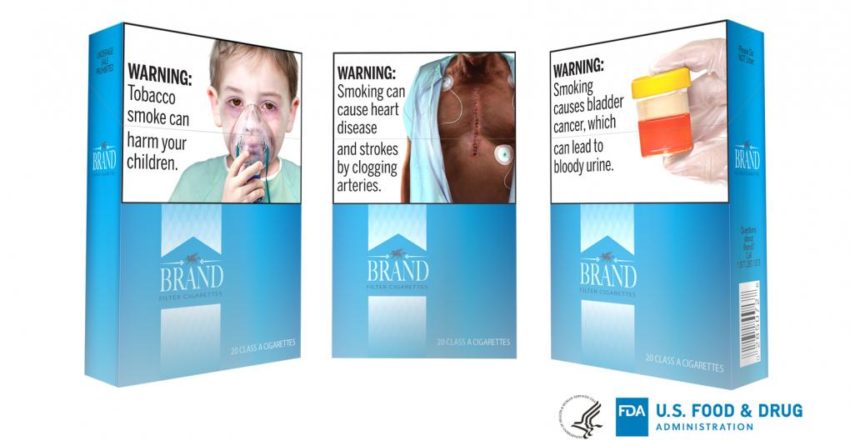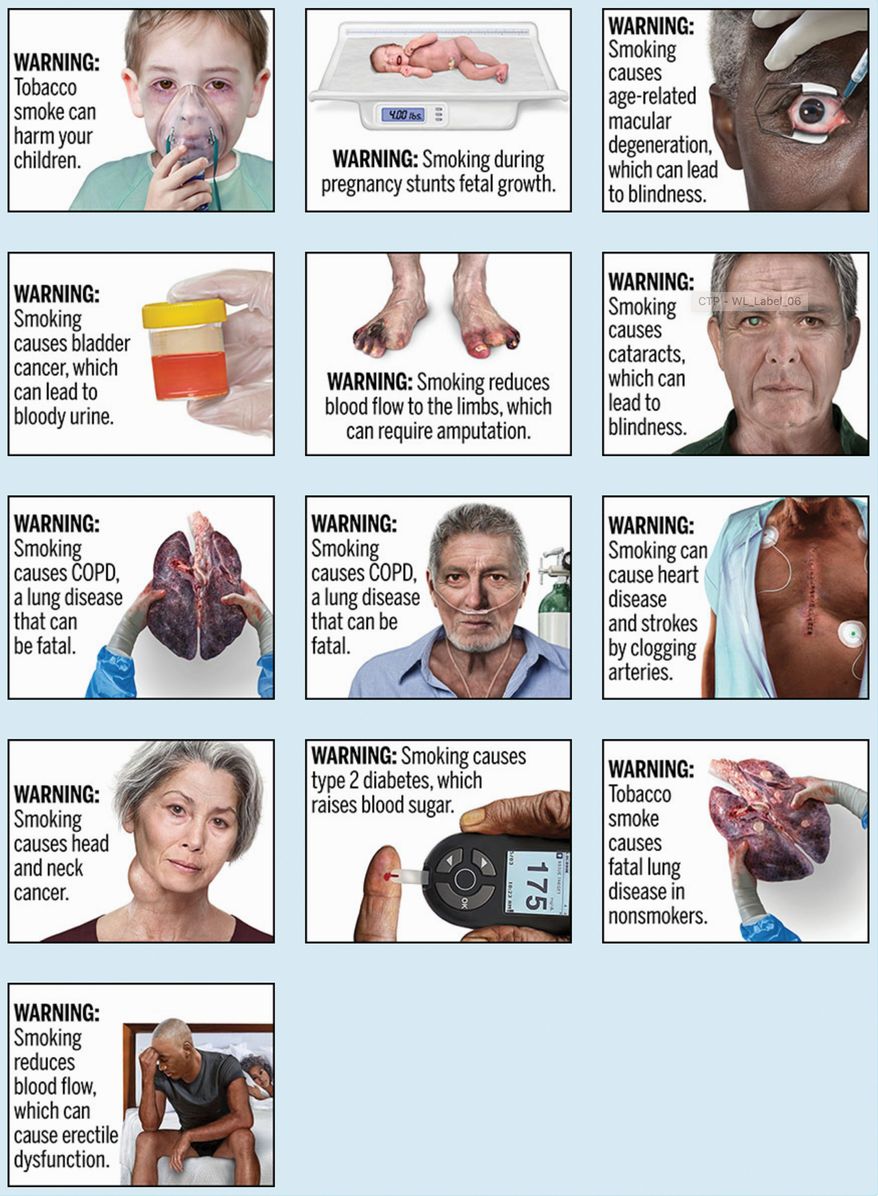
Share On Social!
Many smokers will use tobacco products for years in spite of the known detrimental health impacts.
On Aug. 16, 2019, FDA announced a rule proposal that aims to make a visual representation of those impacts to those buying cigarettes — health warning labels on every package. These labels will use graphic images to convey relevant information about the negative health consequences of smoking.
“With these new proposed cigarette health warnings, we have an enormous public health opportunity to fulfill our statutory mandate and increase the public’s understanding of the full scope of serious negative health consequences of cigarette smoking,” Dr. Ned Sharpless, Acting FDA Commissioner, said in a statement.
Initially, hundreds of people, including over 275 Salud America! network members, commented on FDA’s warning labels by the Oct. 15, 2019, deadline.
Now FDA is re-opening the comment period through Nov. 27, 2019.
Tell FDA: Require Graphic Health Warning Labels on Cigarette Packages
Dear FDA,

Smoking is a hazardous habit, especially for young people. Long-term cigarette use can lead to numerous, life-threatening health complications, including diabetes, blindness, and a variety of deadly cancers.
I commend the FDA for this rule proposal. We must ensure that people of all ages and backgrounds understand all the risks when buying a pack of cigarettes.
I urge the FDA to implement this rule and require all cigarette packaging, advertising contain information that informs consumers of the health risks with which smoking is associated.
Latinos, who are more susceptible to begin smoking at a young age and are less likely to quit, need to be aware of their first purchase what could happen if the habit continues.
We must take the necessary steps to ensure that all information about cigarette smoking is evident.
Thank you
Use of Health Messaging on Tobacco Products
Studies suggest that warning labels encourage smokers to quit, and image-based labels specifically will publicize smoking risks.
“As a cancer doctor and researcher, I am well aware of the staggering toll inflicted on the public health by tobacco products, which cause cancer, heart disease, stroke, emphysema, and other medical problems,” Sharpless said.
FDA’s graphic warnings focus on serious health risks — such as bladder cancer, diabetes, erectile dysfunction, and conditions that can cause blindness. These are lesser-known by the public, but are still important negative health consequences of smoking.
Health warnings, once finalized, would appear prominently on cigarette packages and in advertisements. These would occupy the top half of the area of the front and rear panels of cigarette packages. They would cover at least 20% of the areas at the top of cigarette advertisements.
The FDA said its revised proposal is supported by new research that documents how the warnings will help educate the public about smoking harms.
“Given that tobacco use is still the leading cause of preventable disease and death in the U.S., there’s a lot at stake to ensure the public understands these risks,” Sharpless said. “We remain committed to educating the public, especially America’s youth, about the dangers associated with using cigarettes and other tobacco products.”
Smoking Issues Among Latinos
Latino children are more likely to develop a daily smoking habit than their racial peers, according to a 2016 NBC article.
Latino adults generally have a lower prevalence of cigarette smoking and other tobacco use than other racial/ethnic groups.
Worse, According to the 2017 National Health Interview Survey (NHIS) of adults ages 18 and over, 9.9% of Hispanic adults in the United States are current smokers, compared to 15.2% of Whites, 14.9% of African, Americans, 24% of American Indian/Alaska Natives, and 7.1% of Asian Americans.
Overall, 14% of U.S. adults are current smokers.
But, smoking rates susceptibility has steadily climbed for Hispanic youth, from 22% in 1999 to 28% in 2014.
Big tobacco companies lobbied and targeted more Latino/Hispanic communities.
Often Latinos find it harder to quit smoking cigarettes than their white peers. Latinos also often have less access to stop counseling and nicotine replacement therapy due to income or location.
Data from the Behavioral Risk Factor Surveillance Survey indicates that only half of Hispanic smokers had received advice to quit from a health care provider. Significantly, less than whites (72%), with even wider disparities among those of lower education.
Get Help to Quit Smoking with Quitxt Program
A unique digital program provided by Dr. Ramirez’s Institute for Health Promotion Research at UT Health San Antonio is the Quitxt program, a bilingual service that sends texts with culturally and regionally tailored support to help South Texas young adults quit smoking.
Soon, Quitxt also will extend beyond South Texas to include English and Spanish speakers in rural counties, and Spanish speakers in urban areas of South, West and Central Texas.
Quitxt sends interactive and entertaining texts over four months of service with links to online support, and music and videos developed by UT Health San Antonio researchers. The service also soon start on different digital platforms, such as Facebook Messenger and SMS. The service is supported by a grant from the Cancer Prevention and Research Institute of Texas.
Check out more stories on smoking and Latino health
LEARN: LATINOS Health & Smoking!
Don’t wait! The comment period closes on November 27, 2019.
Explore More:
Quit SmokingBy The Numbers
142
Percent
Expected rise in Latino cancer cases in coming years



